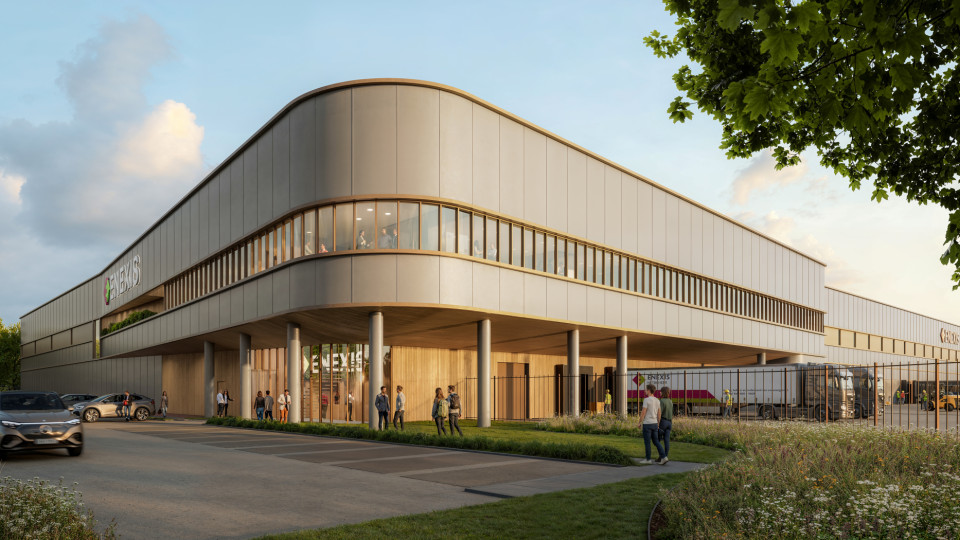With Mercator II, Paul de Ruiter Architects was commissioned to design the next part of the Mercator Technology & Science Park. This second Mercator building is a business center for knowledge-intensive companies in information and communication technology. The aim is the exchange of knowledge between Radboud University Nijmegen and the business community.
Energy-neutral avant la lettre
Mercator II has its own architectural identity and materialization, with the main similarity with Mercator I being the great attention paid to energy management. Mercator II is ten stories high and has a new office typology specially developed for this building, which is based on the working methods of ICT companies, combined to make the building energy-neutral. The design dates back to 1999 when the aim was already to make the building energy-neutral.
Oriented towards the sun
The working method of ICT companies is characterized by communication and interactive information distribution. This requires open, office garden-like set-ups. Placing the main staircase, toilets, and lifts in the south zone of the building creates large, deep, and freely dividable living spaces. Normally a tower is designed with the core in the middle, but this core then blocks the cooperation and connectivity between people that is needed to innovate. Therefore, the core is split into two parts and moved to the corners of the south façade. Like two bookends, they provide space for collaboration, block heat, and are also a perfect surface for installing solar cells. Between these split cores is glass with horizontal slats that can also carry solar cells.
Future proof
The first step in the Trias Energetica of saving as much energy as possible was taken by accommodating everything that is not office space in a single buffer zone on the south side of the building. The east and west façades are fitted with 50% glass with horizontal slats that block the heat from the sun but let in the daylight. The north façade, with 100% glass, allows ample daylight to enter the office floor. Paul de Ruiter Architects developed an innovative facade specifically for this building. The closed surfaces consist of extruded aluminum profiles that function as cooling ribs because the contact surface with the outside air has been increased. This 'skin' therefore acts as a screen against the sun's heat, significantly reducing the energy required for cooling and making the building more energy-efficient. With this principle, almost a quarter less energy is consumed. The rest of the energy would be generated on the south face of the building.
Project details
Gegevens
| Name and location | University Nijmegen |
| Address | Toernooiveld, Campus Radboud |
| Total floor area | 7,000 m² offices |
| Project description | Energy-efficient flexible office building for knowledge-intensive companies in the ICT sector |
| Start of design | September 1999 |
| Stary of construction | July 2000 |
| Completion | November 2001 |
Ontwerpteam
| Client | Radboud University, Nijmegen |
| Project architect | Paul de Ruiter |
| Project team | Michael Noordam, Hannes Ochmann, Björn Peters, Monique Verhoef |
| Contractor | BAM Utiliteitsbouw |
| Structural engineer | Croes Bouwtechnisch Ingenieursbureau |
| Installation engineering | Boonstoppel/Deerns |










